
Fernando de Noronha: Brazil's Pristine Paradise
Discover the untouched beauty of Fernando de Noronha, Brazil's hidden gem, where pristine beaches, vibrant marine life, and lush landscapes await.
Fernando de Noronha is an archipelago of 21 islands and islets in the Atlantic Ocean, about 354 km off the Brazilian coast. This UNESCO World Heritage site is known for its stunning natural beauty and biodiversity, making it a must-visit for nature lovers and adventure seekers alike. The main island, also named Fernando de Noronha, offers some of the best beaches in the world. Baía do Sancho is frequently voted as the top beach globally. Its crystal-clear waters and vibrant marine life make it perfect for snorkeling and diving. Dolphins frolic in these waters, and you can often spot them from the shore or on a boat tour. The island is not just about beaches. The lush green hills and dramatic rock formations create a landscape that is both enchanting and wild. Hiking trails like the Atalaia Trail offer breathtaking views and encounters with unique flora and fauna. For history buffs, the island's old forts and churches provide a glimpse into its colonial past. Sustainability is key in Fernando de Noronha, and there are strict regulations to preserve its natural environment. This means that the number of visitors is limited, ensuring an exclusive and unspoiled experience. Whether you're diving into the deep blue waters, hiking through verdant trails, or simply relaxing on the beach, Fernando de Noronha promises an unforgettable escape.
Local tips in Fernando de Noronha
- Book accommodations and tours well in advance due to limited visitor capacity.
- Bring eco-friendly sunscreen to protect the marine life.
- Rent a buggy for easy island exploration.
- Visit Baía dos Golfinhos early in the morning to see the dolphins.
- Try local delicacies like fish moqueca and tapioca.
Fernando de Noronha: Brazil's Pristine Paradise
Fernando de Noronha is an archipelago of 21 islands and islets in the Atlantic Ocean, about 354 km off the Brazilian coast. This UNESCO World Heritage site is known for its stunning natural beauty and biodiversity, making it a must-visit for nature lovers and adventure seekers alike. The main island, also named Fernando de Noronha, offers some of the best beaches in the world. Baía do Sancho is frequently voted as the top beach globally. Its crystal-clear waters and vibrant marine life make it perfect for snorkeling and diving. Dolphins frolic in these waters, and you can often spot them from the shore or on a boat tour. The island is not just about beaches. The lush green hills and dramatic rock formations create a landscape that is both enchanting and wild. Hiking trails like the Atalaia Trail offer breathtaking views and encounters with unique flora and fauna. For history buffs, the island's old forts and churches provide a glimpse into its colonial past. Sustainability is key in Fernando de Noronha, and there are strict regulations to preserve its natural environment. This means that the number of visitors is limited, ensuring an exclusive and unspoiled experience. Whether you're diving into the deep blue waters, hiking through verdant trails, or simply relaxing on the beach, Fernando de Noronha promises an unforgettable escape.
When is the best time to go to Fernando de Noronha?
Iconic landmarks you can’t miss
Fernando de Noronha Environmental Protection Area
Explore the unspoiled paradise of Fernando de Noronha, a UNESCO World Heritage Site known for its stunning beaches and rich marine diversity.
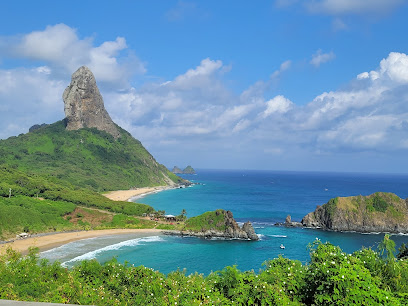
Fernando de Noronha Marine National Park
Explore the stunning landscapes and rich biodiversity of Fernando de Noronha Marine National Park, a true natural paradise in Brazil.
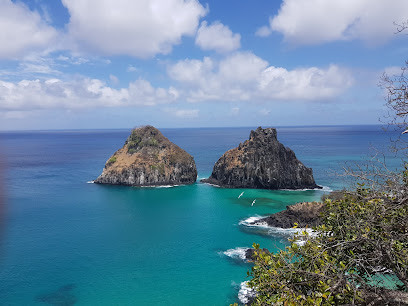
Fundação Projeto Tamar - Fernando de Noronha
Explore Fundação Projeto Tamar: A vital marine conservation hub in Fernando de Noronha, dedicated to protecting endangered sea turtles and their habitats.
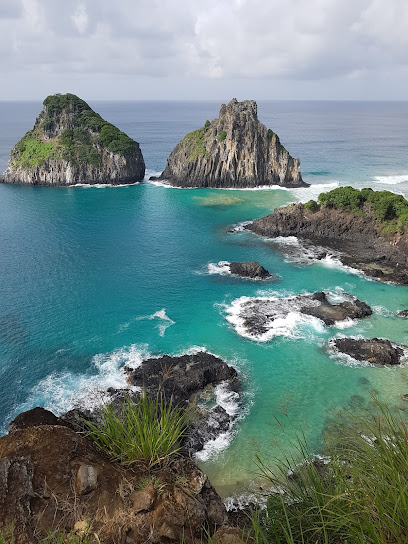
Fort of Our Lady of Remedies
Discover the rich history and breathtaking views at the Fort of Our Lady of Remedies in beautiful Fernando de Noronha.
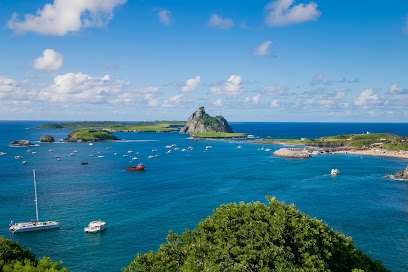
Dog Beach
Discover the stunning Dog Beach in Fernando de Noronha: a tranquil paradise with golden sands, crystal-clear waters, and vibrant marine life waiting for you.
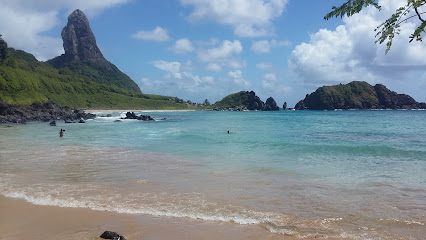
Baía dos Porcos
Experience the unparalleled beauty of Baía dos Porcos, a tropical paradise in Fernando de Noronha, offering stunning views and vibrant marine life.
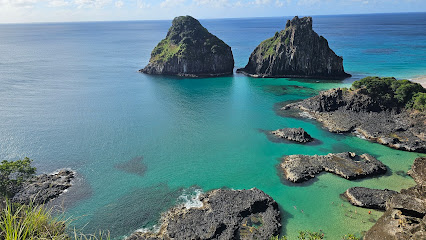
Mirante - Vista do Morro Dois Irmãos
Experience the stunning vistas of Morro Dois Irmãos in Fernando de Noronha, a breathtaking viewpoint offering panoramic views of nature's finest.
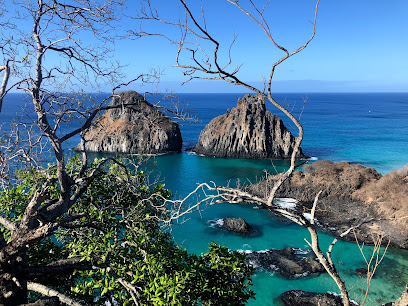
Ilha de Fernando de Noronha
Experience the breathtaking beauty of Ilha de Fernando de Noronha, a Brazilian island paradise renowned for its stunning landscapes and vibrant marine life.
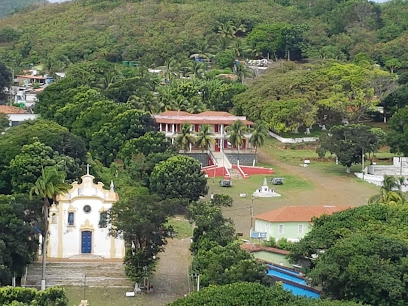
Praia do Bode
Discover the untouched beauty of Praia do Bode, a pristine ecological park in Ilha Fernando de Noronha, perfect for nature lovers and beach enthusiasts.
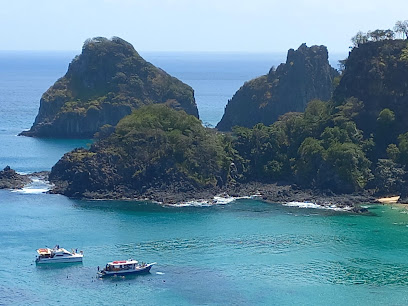
ICMBio Fernando de Noronha
Discover the beauty and biodiversity of ICMBio Fernando de Noronha, where nature conservation meets breathtaking landscapes in a UNESCO World Heritage Site.
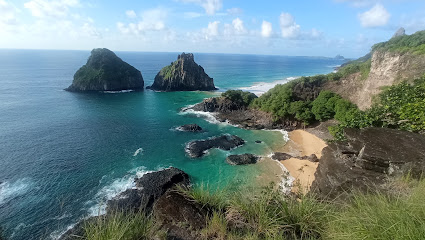
Morro Dois Irmãos
Discover the breathtaking beauty of Morro Dois Irmãos, a stunning rock formation and a must-visit paradise in Fernando de Noronha, Brazil.

Bosque da baía do sueste
Explore Bosque da Baía do Sueste, a national forest in Fernando de Noronha, where nature thrives in stunning landscapes and rich biodiversity.
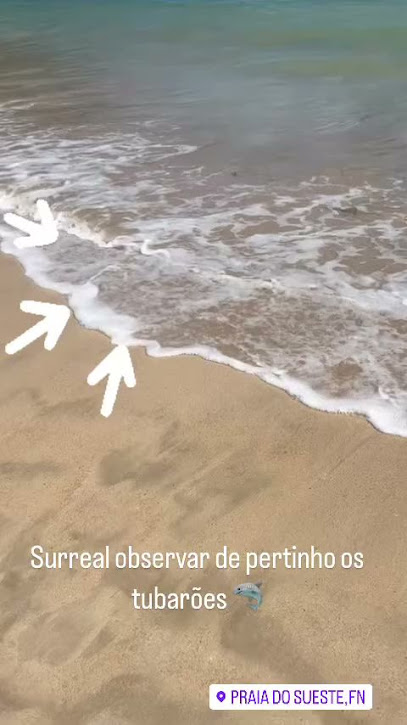
Gray Line Fernando de Noronha
Explore the breathtaking beauty and rich biodiversity of Fernando de Noronha with Gray Line, your premier tour operator for unforgettable adventures.
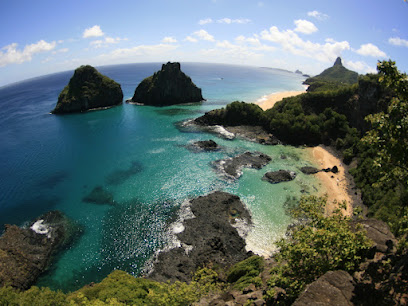
Unmissable attractions to see
Fernando de Noronha Environmental Protection Area
Explore the pristine beauty and rich biodiversity of Fernando de Noronha, a UNESCO World Heritage site that promises unforgettable adventures in nature.
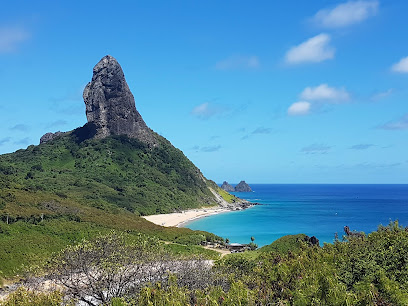
Costa Noronha
Explore the pristine beauty of Costa Noronha, a UNESCO World Heritage site, with stunning beaches and vibrant marine life waiting to be discovered.
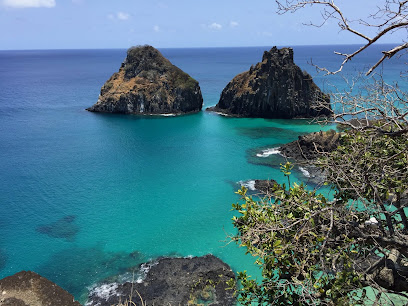
Sharks Cove
Discover the breathtaking beauty and vibrant marine life at Sharks Cove in Fernando de Noronha, a paradise for snorkeling and relaxation.

Church of Our Lady of Good Remedy
Discover the tranquil beauty of the Church of Our Lady of Good Remedy, a cultural gem in Fernando de Noronha that invites reflection and spiritual connection.
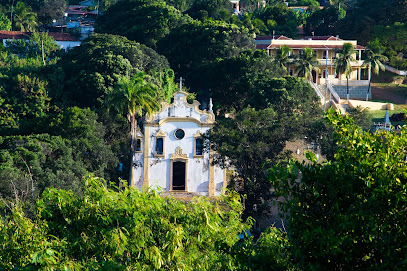
Praia do Atalaia
Discover the pristine beauty and vibrant marine life of Praia do Atalaia, a public beach paradise in Fernando de Noronha.

Mirante Buraco da Raquel
Discover stunning ocean views and rich biodiversity at Mirante Buraco da Raquel, a must-visit viewpoint in Fernando de Noronha, Brazil.
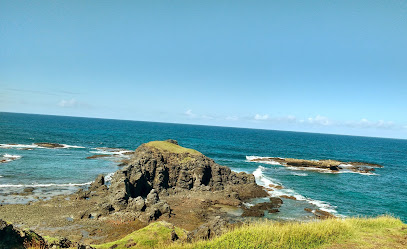
Palácio São Miguel
Discover the rich heritage of Fernando de Noronha at Palácio São Miguel, a captivating museum blending history and stunning architecture in an idyllic setting.
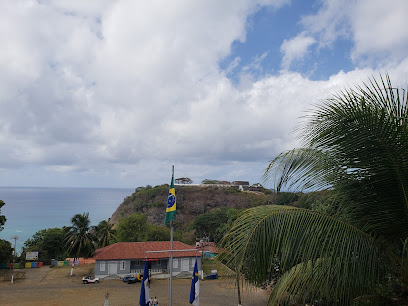
Mirante dos Golfinhos
Discover the breathtaking Mirante dos Golfinhos in Fernando de Noronha, where stunning ocean views and playful dolphins await you.
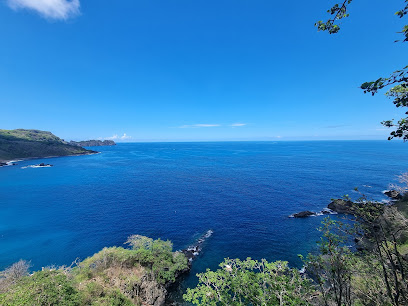
Trilha do Capim Açu
Discover the natural beauty and breathtaking views of Trilha do Capim Açu, a premier hiking destination in Fernando de Noronha, Brazil.
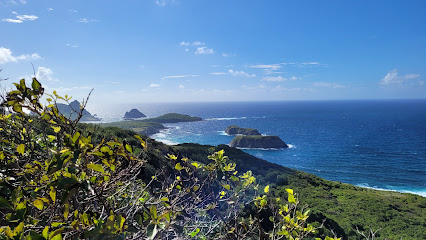
Sueste Beach
Explore the serene beauty of Sueste Beach in Fernando de Noronha, a paradise for snorkeling and sunbathing surrounded by breathtaking landscapes.
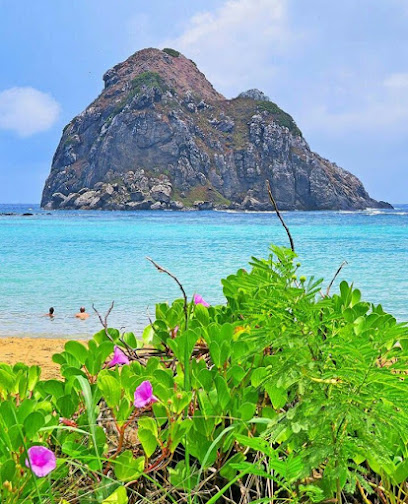
Trilha do Atalaia
Explore the stunning Trilha do Atalaia, a hiking gem in Fernando de Noronha, offering breathtaking views and rich biodiversity amidst lush landscapes.
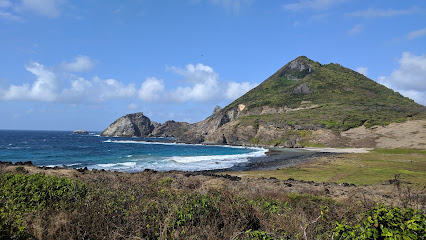
Fort St. John the Baptist of the Two Brothers
Discover the historic Fort St. John the Baptist of the Two Brothers in Fernando de Noronha, a stunning blend of history, culture, and breathtaking views.
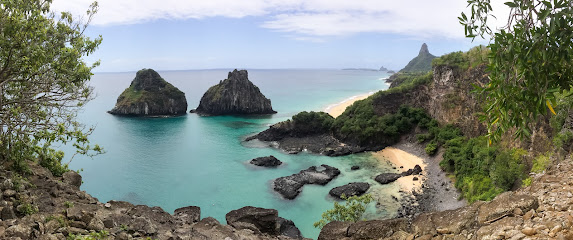
Trilha dos Abreus
Explore Trilha dos Abreus in Fernando de Noronha for breathtaking landscapes, diverse wildlife, and an unforgettable hiking adventure in paradise.
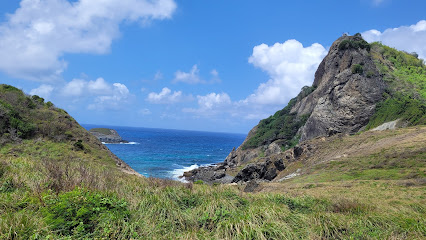
Praia da Quixaba
Discover the serene beauty of Praia da Quixaba in Pernambuco, Brazil, where golden sands meet azure waters for an unforgettable beach experience.
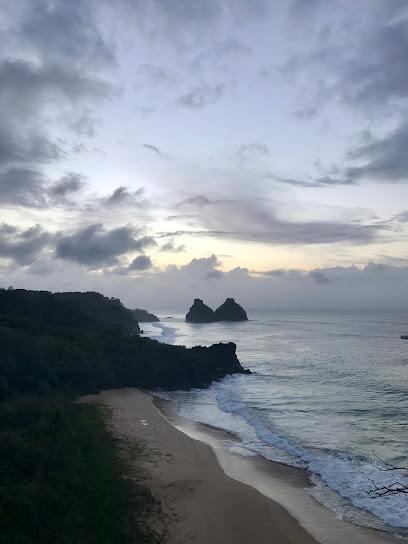
Posto de Observação
Discover the stunning vistas of Fernando de Noronha at Posto de Observação, the perfect spot for unforgettable views and a connection with nature.
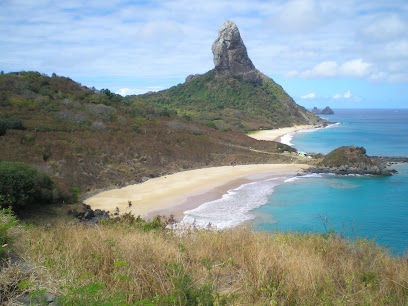
Essential places to dine
Restaurante Xica da Silva ️
Discover exquisite seafood dining at Restaurante Xica da Silva in Fernando de Noronha - renowned for authentic Brazilian flavors and breathtaking views.
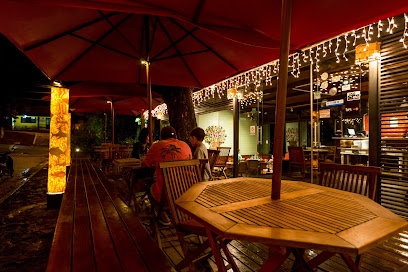
Bar do Meio Noronha
Discover Bar do Meio Noronha: A seafood haven offering breathtaking views and a taste of Brazil's coastal cuisine in Fernando de Noronha.

Restaurante Cacimba Bistrô
Experience authentic Brazilian cuisine at Restaurante Cacimba Bistrô in Fernando de Noronha – where every dish tells a story.
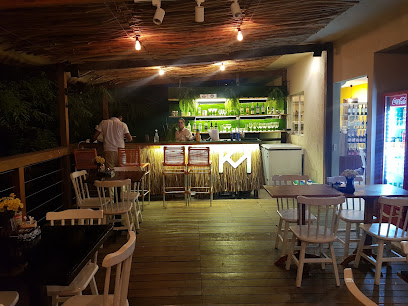
Restaurante Varanda Noronha
Discover exquisite seafood and breathtaking views at Restaurante Varanda Noronha - a true gem in Fernando de Noronha's culinary scene.
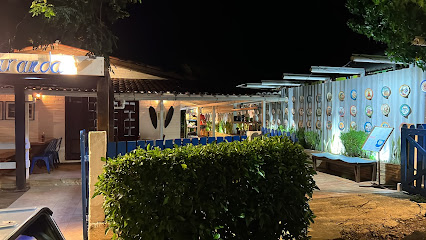
Flamboyant Rock Restaurant F.Noronha
Experience gourmet hamburgers with stunning views at Flamboyant Rock Restaurant in Fernando de Noronha – a true taste of paradise.
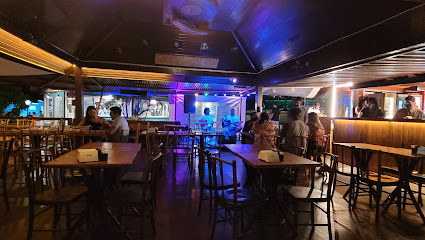
Mergulhão Noronha
Experience exquisite seafood dining with breathtaking views at Mergulhão Noronha in Fernando de Noronha.
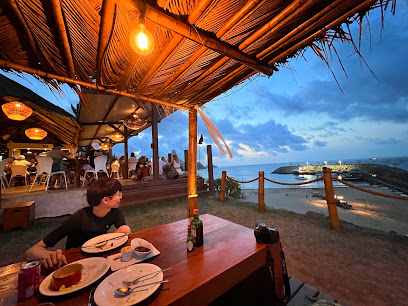
Restaurante Valdenio
Experience authentic Brazilian cuisine at Restaurante Valdenio on Ilha Fernando de Noronha – where every meal is a celebration of local flavors.
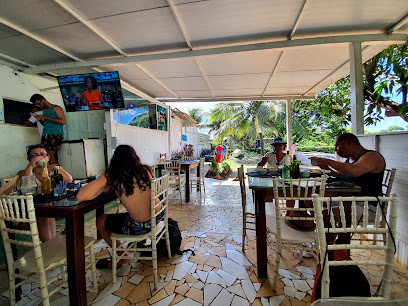
Forno Noronha
Discover Forno Noronha: A culinary treasure in Fernando de Noronha offering mouthwatering pizzas made from fresh local ingredients.
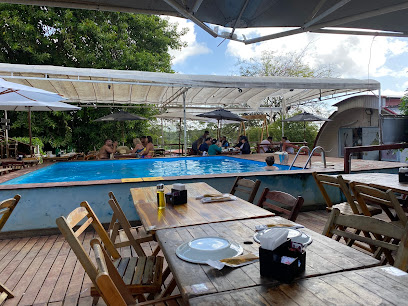
O Pico
Experience exquisite local cuisine and vibrant atmosphere at O Pico in Fernando de Noronha - a must-visit culinary destination!
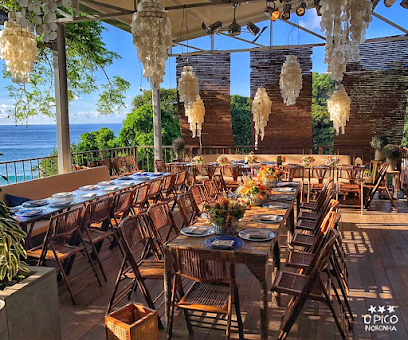
Restaurante do Vale
Discover the culinary treasures of Fernando de Noronha at Restaurante do Vale - where local flavors meet stunning island views.
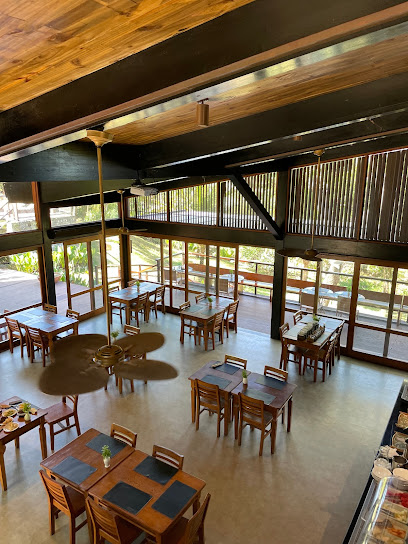
Maré Comida com Vida - Noronha
Experience the authentic flavors of Fernando de Noronha at Maré Comida com Vida - where local ingredients meet culinary artistry.

Restaurante da Edilma
Experience authentic Brazilian cuisine at Restaurante da Edilma, where fresh seafood meets island charm in Fernando de Noronha.
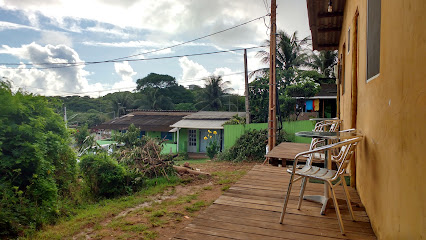
Benedita Restaurant
Experience exquisite seafood dining at Benedita Restaurant in Fernando de Noronha – where every bite is a taste of paradise.

Restaurante Fernão El Loco Tapas e Drinks
Discover authentic Brazilian cuisine at Restaurante Fernão El Loco in Fernando de Noronha, featuring delightful tapas and refreshing drinks amidst stunning island views.
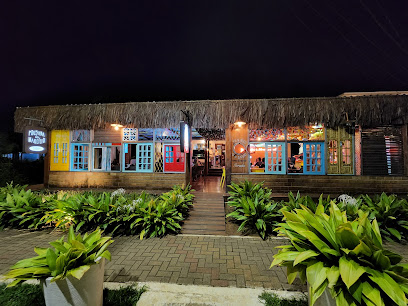
Bar Duda Rei
Experience vibrant local cuisine and breathtaking ocean views at Bar Duda Rei in Fernando de Noronha's stunning Praia da Conceição.
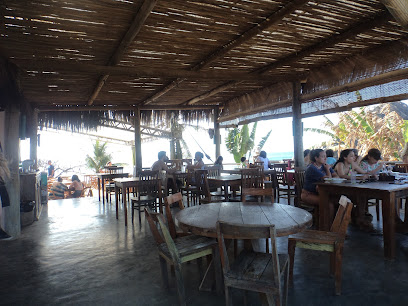
Markets, malls and hidden boutiques
Gelateria Paradiso Noronha
Experience the authentic taste of Italy at Gelateria Paradiso Noronha, where every scoop is a delicious piece of paradise.
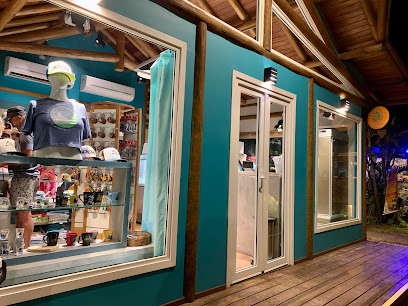
EmNoronha
Explore EmNoronha in Fernando de Noronha – a vibrant store filled with unique local crafts, souvenirs, and eco-friendly products that capture the islands' essence.
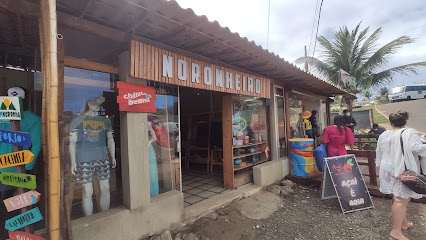
Mundo Verde
Explore Mundo Verde: Your destination for organic and natural products in the stunning paradise of Fernando de Noronha.
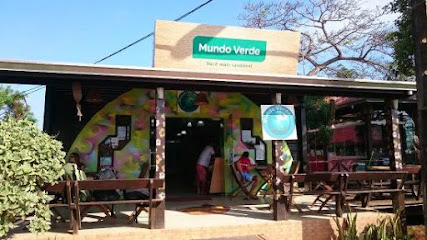
Made In Noronha
Explore the vibrant culture of Fernando de Noronha at Made In Noronha, where local craftsmanship and unique souvenirs await.
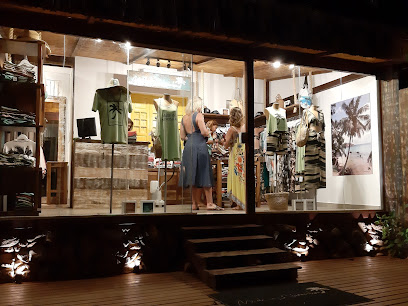
Neuronha
Explore Neuronha, the premier clothing store in Fernando de Noronha, for unique fashion inspired by the island's beauty and culture.
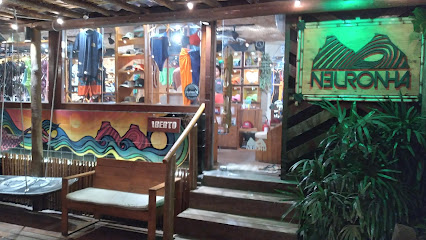
Noronha Roots
Discover the beauty of Fernando de Noronha with top-notch outdoor gear from Noronha Roots, your adventure partner in this tropical paradise.
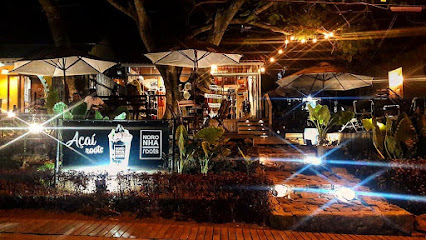
Quiosque do atalaia
Experience the flavors and breathtaking views of Quiosque do Atalaia, a must-visit kiosk in Fernando de Noronha's tropical paradise.
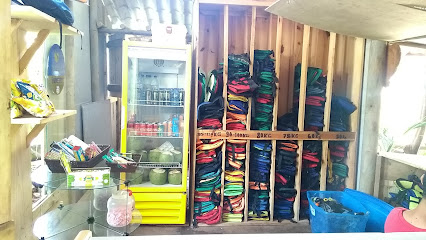
Mar de Sabores
Experience the vibrant flavors of Fernando de Noronha at Mar de Sabores, a haven for coffee lovers and culinary enthusiasts.

Espaço Luz - Aeroporto
Discover local treasures at Espaço Luz, the gateway store at Fernando de Noronha Airport offering unique crafts and essentials for every traveler.
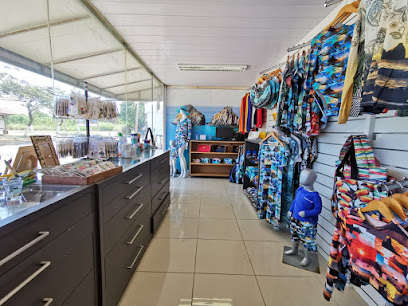
Chilli Beans
Explore unique fashion accessories at Chilli Beans in Fernando de Noronha for a stylish island adventure.

Loja Noronhando
Discover unique souvenirs at Loja Noronhando, where local artistry meets the natural beauty of Fernando de Noronha.
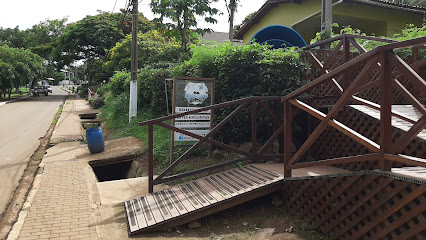
Color Time
Discover unique fashion accessories inspired by the beauty of Fernando de Noronha at Color Time.
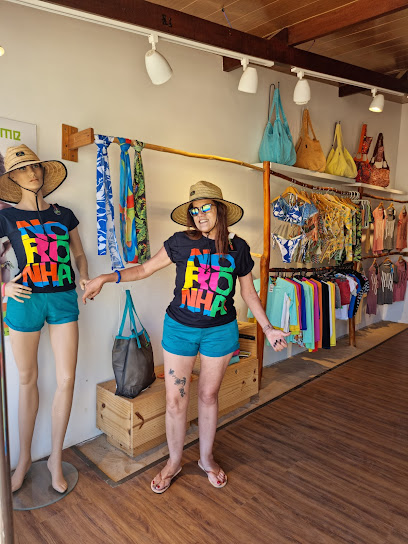
My Store Noronha
Discover the vibrant styles of Fernando de Noronha at My Store Noronha, where island charm meets trendy fashion.
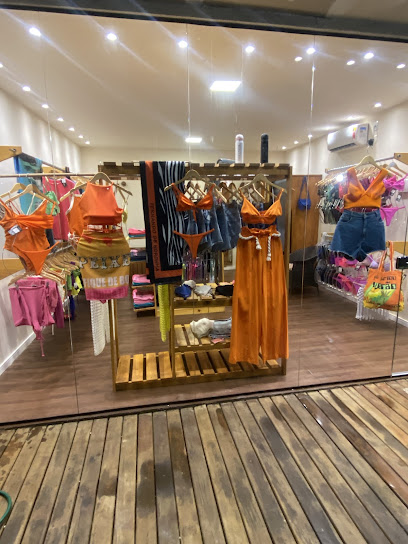
Aloha noronha
Explore the rich flavors of Brazil at Aloha Noronha, a charming liquor store in the heart of Fernando de Noronha, where local spirits come alive.
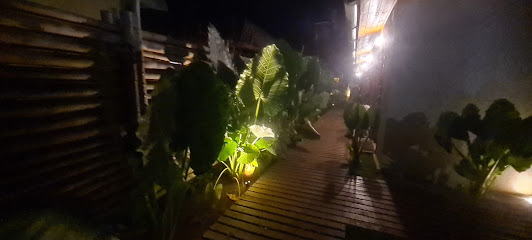
Pet Ry E Lu
Explore Pet Ry E Lu in Fernando de Noronha - a unique pet shop offering supplies for your furry friends in paradise.
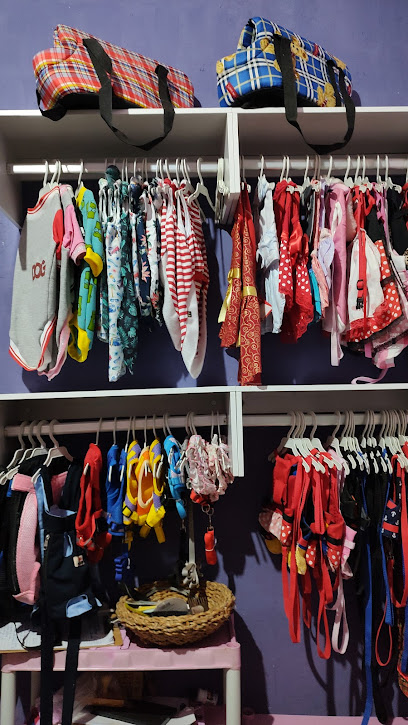
Essential bars & hidden hideouts
Bar do Meio Noronha
Discover the flavors of the sea at Bar do Meio Noronha, where culinary excellence meets stunning ocean views in Fernando de Noronha.
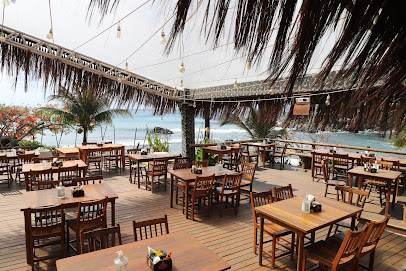
Dog Bar
Discover the vibrant Dog Bar in Fernando de Noronha – a top destination for unique cocktails, local bites, and a lively atmosphere in paradise.
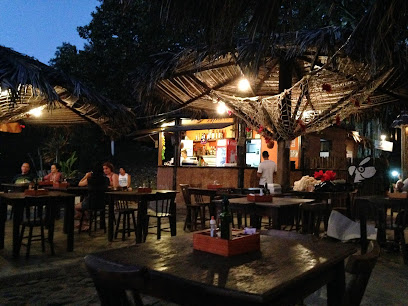
Bar Duda Rei
Experience the essence of Fernando de Noronha at Bar Duda Rei, where delicious drinks and local flavors meet stunning ocean views.
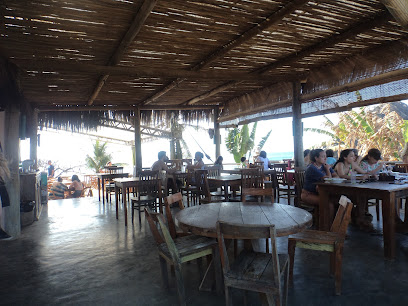
MIRANTE DO BOLDRO
Experience the stunning views and relaxing atmosphere of Mirante do Boldró, an iconic bar in Fernando de Noronha, Brazil.
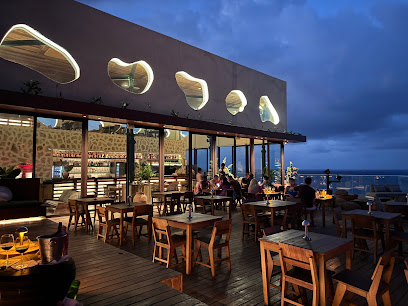
Bar dos Mares
Experience the essence of Fernando de Noronha at Bar dos Mares, where refreshing drinks and stunning views await in a vibrant island atmosphere.
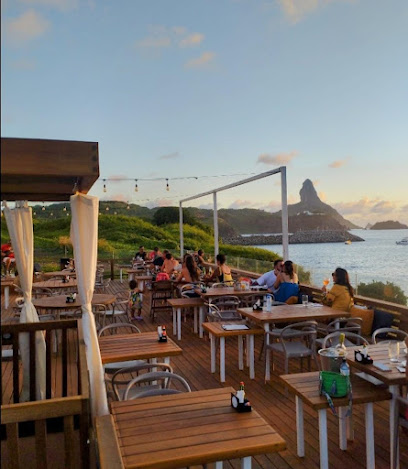
ACAITERIA E ESPETARIA
Experience the vibrant local culture and refreshing drinks at ACAITERIA E ESPETARIA in beautiful Fernando de Noronha.
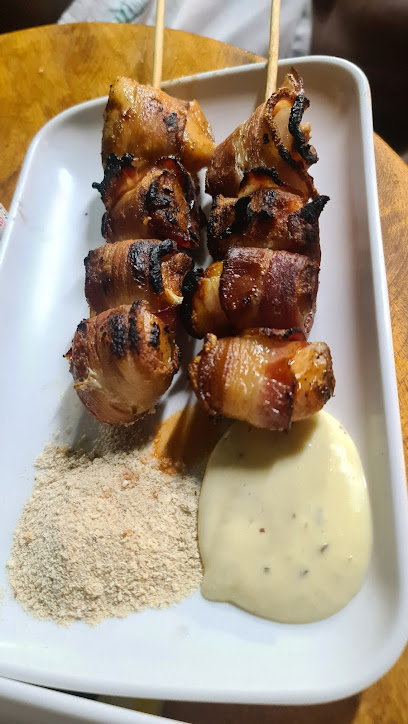
Fernando de noronha
Explore Fernando de Noronha: a breathtaking Brazilian archipelago famous for its pristine beaches, vibrant marine life, and unparalleled natural beauty.
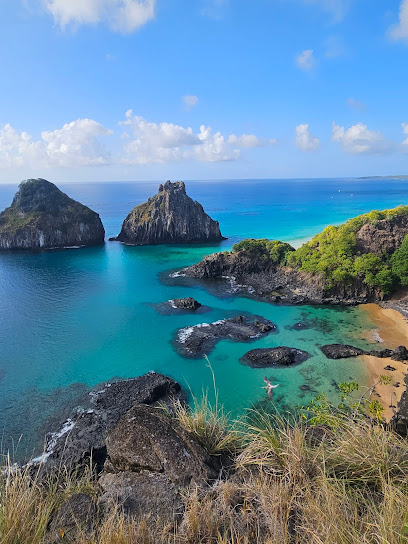
Boteco do Henrique
Discover the vibrant atmosphere and local flavors at Boteco do Henrique, the ultimate bar experience in Fernando de Noronha.
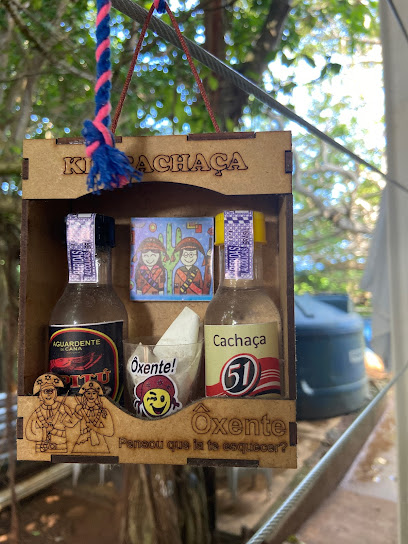
Cacimba Lounge Bar
Experience the laid-back charm of Cacimba Lounge Bar in Fernando de Noronha, where tropical drinks and stunning beach views await.
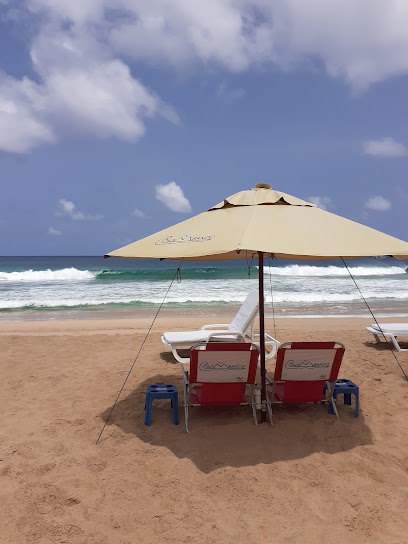
Casa do Gerson
Discover the serene charm of Casa do Gerson, a beachfront bar in Fernando de Noronha, perfect for relaxation and enjoying breathtaking sunset views.
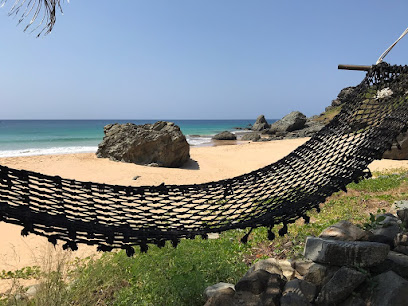
Giselly's Guarda Sol e Serviços de Garçon
Discover the essence of relaxation at Giselly's Guarda Sol e Serviços de Garçon, a blissful bar on Praia Cacimba do Padre in Fernando de Noronha.
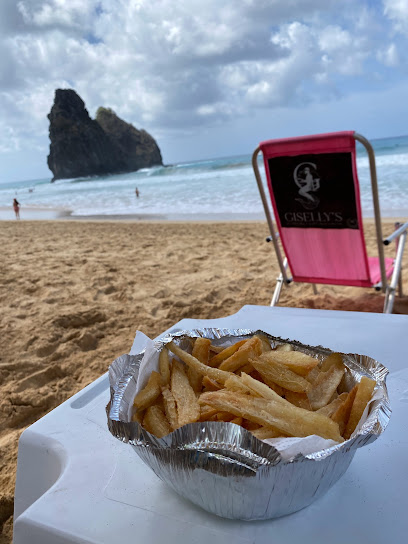
Brbeer Noronha
Experience the vibrant nightlife and exquisite cocktails at Brbeer Noronha, a tropical oasis in the heart of Fernando de Noronha.
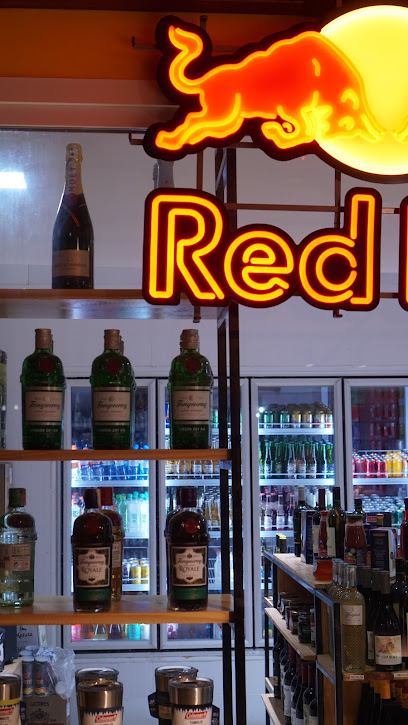
Bar do Glaybson Noronha
Discover the lively nightlife of Fernando de Noronha at Bar do Glaybson, where delicious drinks and great music create an unforgettable experience.

Éden Noronha
Experience the flavors of Fernando de Noronha at Éden Noronha, a unique gastropub offering delicious dishes and stunning views.
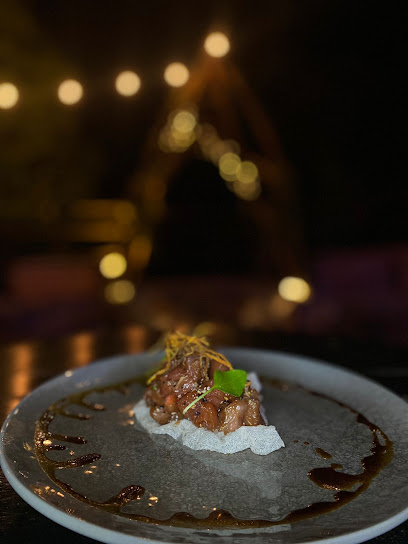
Boteco da villa FN
Experience the vibrant flavors of Fernando de Noronha at Boteco da Villa FN, where handcrafted cocktails meet tropical paradise.

Local Phrases about Fernando de Noronha
-
- HelloOlá
[oh-lah] - GoodbyeTchau
[chow] - YesSim
[seem] - NoNão
[nah-oh] - Please/You're welcomePor favor/De nada
[por fah-vor/dee nah-dah] - Thank youObrigado/Obrigada
[oh-bree-gah-doh/oh-bree-gah-dah] - Excuse me/SorryCom licença/Desculpe
[kohm lee-sen-sah/dehs-kool-peh] - How are you?Como vai você?
[koh-moh vah-ee vo-seh] - Fine. And you?Bem. E você?
[beng eh vo-seh] - Do you speak English?Você fala inglês?
[vo-seh fah-lah een-glehs] - I don't understandEu não entendo
[eh-oo now-en-ten-doo]
- HelloOlá
-
- I'd like to see the menu, pleaseEu gostaria de ver o cardápio, por favor
[eh-oo gohs-tah-ree-ah deh veh ooh kahr-dah-pyoo, por fah-vor] - I don't eat meatEu não como carne
[eh-oo now ko-moh kahr-neh] - Cheers!Saúde!
[sow-deh] - I would like to pay, pleaseEu gostaria de pagar, por favor
[eh-oo gohs-tah-ree-ah deh pah-gahr, por fah-vor]
- I'd like to see the menu, pleaseEu gostaria de ver o cardápio, por favor
-
- Help!Socorro!
[soh-koh-roh] - Go away!Vá embora!
[vah ehm-boh-rah] - Call the Police!Chame a polícia!
[shah-meh ah poh-lee-see-ah] - Call a doctor!Chame um médico!
[shah-meh ooh meh-dee-koh] - I'm lostEstou perdido
[es-toh pehr-dee-doo] - I'm illEstou doente
[es-toh doo-en-teh]
- Help!Socorro!
-
- I'd like to buy...Eu gostaria de comprar...
[eh-oo gohs-tah-ree-ah deh kohm-prahr] - I'm just lookingEstou só olhando
[es-toh soh oh-lhan-doo] - How much is it?Quanto custa?
[kwahn-toh koos-tah] - That's too expensiveIsso é muito caro
[ee-soh eh moo-ee-toh kah-roh] - Can you lower the price?Você pode baixar o preço?
[vo-seh poh-deh bahy-shahr ooh preh-soh]
- I'd like to buy...Eu gostaria de comprar...
-
- What time is it?Que horas são?
[keh oh-rahz sah-ooh] - It's one o'clockÉ uma hora
[eh oo-mah oh-rah] - Half past (10)Meia hora (10)
[may-ah oh-rah (dees)] - MorningManhã
[mahn-yah] - AfternoonTarde
[tahr-deh] - EveningNoite
[noy-tchee] - YesterdayOntem
[on-tehm] - TodayHoje
[oh-zhay] - TomorrowAmanhã
[ah-mahn-yah] - 1Um
[oom] - 2Dois
[doh-ees] - 3Três
[trehs] - 4Quatro
[kwah-troh] - 5Cinco
[seen-koh] - 6Seis
[saysh] - 7Sete
[seh-teh] - 8Oito
[oy-toh] - 9Nove
[noh-veh] - 10Dez
[dehz]
- What time is it?Que horas são?
-
- Where's a/the...?Onde fica o/a...?
[ohn-deh fee-kah oh/ah] - What's the address?Qual é o endereço?
[kwahl eh oh ehn-deh-reh-soh] - Can you show me (on the map)?Você pode me mostrar (no mapa)?
[vo-seh poh-deh meh moh-strahr (noh mah-pah)] - When's the next (bus)?Quando é o próximo (ônibus)?
[kwahn-doh eh oh proh-see-moh (oh-nee-boos)] - A ticket (to ....)Um bilhete (para ....)
[oom bee-yeh-teh (pah-rah)]
- Where's a/the...?Onde fica o/a...?
History of Fernando de Noronha
-
Fernando de Noronha was discovered by the Portuguese on August 10, 1503. The island was named after the Portuguese merchant Fernão de Loronha, who financed the expedition led by Gonçalo Coelho. Early exploration of the island revealed its strategic maritime importance due to its location in the Atlantic Ocean.
-
Throughout the 16th and 17th centuries, Fernando de Noronha switched hands numerous times. Initially under Portuguese control, it was briefly occupied by the English and later by the Dutch. The island's strategic location made it a highly contested territory during various colonial conflicts.
-
In the 18th century, Fernando de Noronha was transformed into a penal colony by the Portuguese Crown. Convicts and political prisoners were sent to the island, and many of the structures built during this period still stand today. The island served as a prison until the early 20th century.
-
During World War II, Fernando de Noronha gained military significance. The Brazilian government allowed the United States to establish an airbase on the island as part of the Allied efforts in the South Atlantic. This period saw significant infrastructural development, including the construction of airstrips and military installations.
-
In 1988, Fernando de Noronha was declared a National Marine Park by the Brazilian government. This designation aimed to preserve its unique ecosystem and biodiversity. The park covers approximately 70% of the island's territory and has become a model for conservation and sustainable tourism.
-
In 2001, Fernando de Noronha, along with the Atol das Rocas, was designated a UNESCO World Heritage Site. This recognition highlights the island's exceptional natural beauty and ecological importance, particularly its rich marine life, including dolphins, sea turtles, and numerous fish species.
-
The island's culture is a vibrant mix of indigenous, African, and European influences, reflecting Brazil's diverse heritage. Local traditions include the Festival of Saint Peter, the patron saint of fishermen, celebrated with maritime processions and traditional music. Handicrafts and local cuisine, featuring fresh seafood, are integral parts of the island's cultural identity.
Fernando de Noronha Essentials
-
Fernando de Noronha is an archipelago located approximately 354 kilometers off the northeastern coast of Brazil. The most common way to reach the islands is by air. Flights are available from Recife (REC) and Natal (NAT) to Fernando de Noronha Airport (FEN). Alternatively, there are cruise options that occasionally visit the islands as part of their itineraries.
-
Once on the island, transportation options are relatively limited but sufficient for the small area. Buggies are the most popular form of transport and can be rented upon arrival. There are also taxis available, and a public bus route that runs across the island, connecting the main beaches and points of interest. For those who enjoy cycling, bikes can also be rented.
-
The official currency in Fernando de Noronha is the Brazilian Real (BRL). Credit cards are widely accepted, but it is advisable to carry some cash for smaller establishments and activities. There are banks and ATMs on the island, but be prepared for occasional outages. It's best to withdraw enough cash before arriving on the island.
-
Fernando de Noronha is generally a safe destination with low crime rates. However, tourists should still take standard precautions. Avoid leaving belongings unattended on beaches and stay aware of your surroundings, especially in more secluded areas. There are no specific high-crime neighborhoods targeting tourists, but it's always good practice to stay vigilant.
-
In case of an emergency, dial 193 for the fire department or 192 for medical emergencies. The island has a small hospital equipped to handle most medical situations. It is highly recommended to have travel insurance that covers medical emergencies. For minor health issues, there are pharmacies on the island where you can purchase over-the-counter medications.
-
Fashion: Do wear light, breathable clothing suitable for a tropical climate. Don’t forget to bring swimwear and reef-safe sunscreen. Religion: Do respect local customs and traditions. There is a small church on the island, and modest attire is appreciated when visiting. Public Transport: Do use the public bus system; it’s an affordable way to get around. Don’t expect it to run on a strict schedule. Greetings: Do greet locals with a warm 'Bom dia' (Good morning) or 'Boa tarde' (Good afternoon). Don’t be surprised if they respond with a friendly smile. Eating & Drinking: Do try the local seafood and traditional dishes. Don’t leave without trying the local tapioca pancakes.
-
To experience Fernando de Noronha like a local, consider visiting the island’s lesser-known beaches and trails. Engage with locals, who are often very friendly and willing to share their favorite spots. Participate in conservation activities, as the island is a protected area and efforts to preserve its natural beauty are ongoing. Don't miss the opportunity to snorkel or scuba dive in one of the world's most pristine marine environments.
Trending Landmarks in Fernando de Noronha
-
Fernando de Noronha Environmental Protection Area
-
Fernando de Noronha Marine National Park
-
Fundação Projeto Tamar - Fernando de Noronha
-
Fort of Our Lady of Remedies
-
Dog Beach
-
Baía dos Porcos
-
Mirante - Vista do Morro Dois Irmãos
-
Ilha de Fernando de Noronha
-
Praia do Bode
-
ICMBio Fernando de Noronha
-
Morro Dois Irmãos
-
Bosque da baía do sueste
-
Gray Line Fernando de Noronha
Nearby Cities to Fernando de Noronha
-
Things To Do in Fortaleza
-
Things To Do in Salvador
-
Things To Do in Brasília
-
Things To Do in Praia
-
Things To Do in Assomada
-
Things To Do in Vila do Maio
-
Things To Do in Rio de Janeiro
-
Things To Do in Boa Vista
-
Things To Do in Sal Rei
-
Things To Do in Santa Maria
-
Things To Do in Espargos
-
Things To Do in Canchungo
-
Things To Do in Bonthe
-
Things To Do in Conakry
-
Things To Do in Bissau












